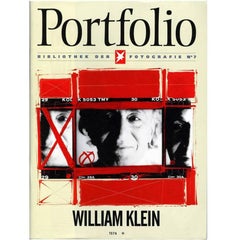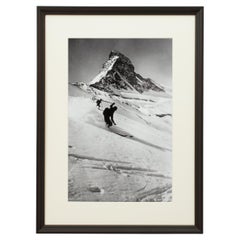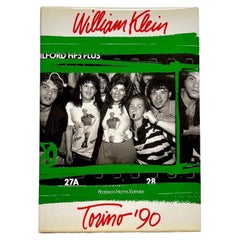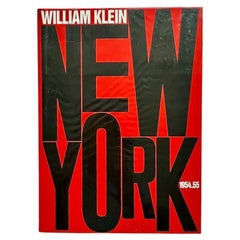William Klein Furniture
American photographer William Klein continually channeled the zeitgeist through his oeuvre, imbuing his photography with startling honesty and empathy, as well as his own particular brand of abstraction. The portraits, scenes and scenarios resemble windows into a world where reality has begun to warp, sometimes dreamily, other times more emphatically, so that snapshot moments are strangely portentous or full of possibility.
Klein was best known for his early fashion shots and arresting street photography, capturing, with candor and humanity, life in cities around the world, including Rome, Moscow, Tokyo and Paris. His gritty and grainy images of 1950s New York are widely considered his most powerful, documenting the underbelly of a growing metropolis, with his focus set on the energy and multidimensional nature of postwar culture. In his 1955 image Selwyn Theatre, 42nd Street, New York, for example, Klein contrasted the gleaming silhouette of a car with the faded-out forms of a group of young men about town, creating strong graphic patterns that suggest a sense of abandon and opportunity.
Klein’s aesthetic, however, is not easy to summarize, since he demonstrated an eager embrace of experimentation through the decades. Early street shots are often out of focus and taken at unexpected angles, while his 1960s fashion shots and celebrity portraits for Vogue’s American, French and British editions are sleek and subtly Surrealist, pioneering a new style that put the spotlight on the beauty of the composition rather than the allure of the clothes, as seen in Smoke and Veil (1956) and his 1961 portrait of Anouk Aimée for Paris Vogue.
In addition to photography, Klein explored painting, filmmaking, graphic design and publishing, adopting a polymathic attitude to the arts. Klein began his career as a painter under the tutelage of French abstractionist Fernand Léger, having moved to Paris in 1948. The experience opened his mind to the possibilities of manipulated form, specifically the illusionary effects achieved through the playful arrangement of light and shadow.
A commission from 1952 was instrumental in his side step into photography. Having created a painted room divider for an architect, Klein took photographs of the rotating piece. His delight in the fragmented shapes created by the movement prompted him to make thousands of abstract photograms by applying shifting geometrical forms on photographic paper during long exposures.
Indeed, the unorthodox mixture of disorder and imperfection, along with beauty and energy, remained a constant in his work, as evidenced by such unconventionally arresting images as Candy Store, Amsterdam Avenue, New York (1955), Independence Day Parade, Dakar (1963) and Black Venus West Indian Day Parade, Brooklyn, New York (2013). Among Klein’s most famous celluloid achievements is his 1964 documentary Cassius the Great, dedicated to a young Muhammad Ali in the run up to his fight with Sonny Liston.
In fact, many of Klein’s photographs and films have a strong sociopolitical dimension, although they were not intended as acts of propaganda. Instead, they raised awareness about conditions of flux, antagonism, hope and change, especially among African American and minority communities as they navigated times of change. This is exemplified by vibrant shots like Easter Sunday, Harlem High Hat, New York and Moves and Pepsi, Harlem, both featured in the self-designed and self-published seminal tome New York: 1954.55.
Find authentic William Klein photography on 1stDibs.
1960s Vintage William Klein Furniture
Paper
1930s British Sporting Art Vintage William Klein Furniture
Paper
1930s English Sporting Art Vintage William Klein Furniture
Paper, Wood
1930s English Sporting Art Vintage William Klein Furniture
Paper, Wood
1930s English Sporting Art Vintage William Klein Furniture
Paper, Wood
1930s English Sporting Art Vintage William Klein Furniture
Paper, Wood
1930s English Sporting Art Vintage William Klein Furniture
Paper
1930s British Sporting Art Vintage William Klein Furniture
Paper, Wood
1930s English Sporting Art Vintage William Klein Furniture
Paper, Wood
1930s English Sporting Art Vintage William Klein Furniture
Paper
1930s English Sporting Art Vintage William Klein Furniture
Paper, Wood
1930s Swiss Sporting Art Vintage William Klein Furniture
Paper
1930s British Sporting Art Vintage William Klein Furniture
Paper, Wood
1990s Italian William Klein Furniture
Paper
1990s British William Klein Furniture
Paper
1980s American Vintage William Klein Furniture
Paper
1990s North American William Klein Furniture
Paper
Early 2000s Italian William Klein Furniture
Early 2000s British William Klein Furniture
Paper




